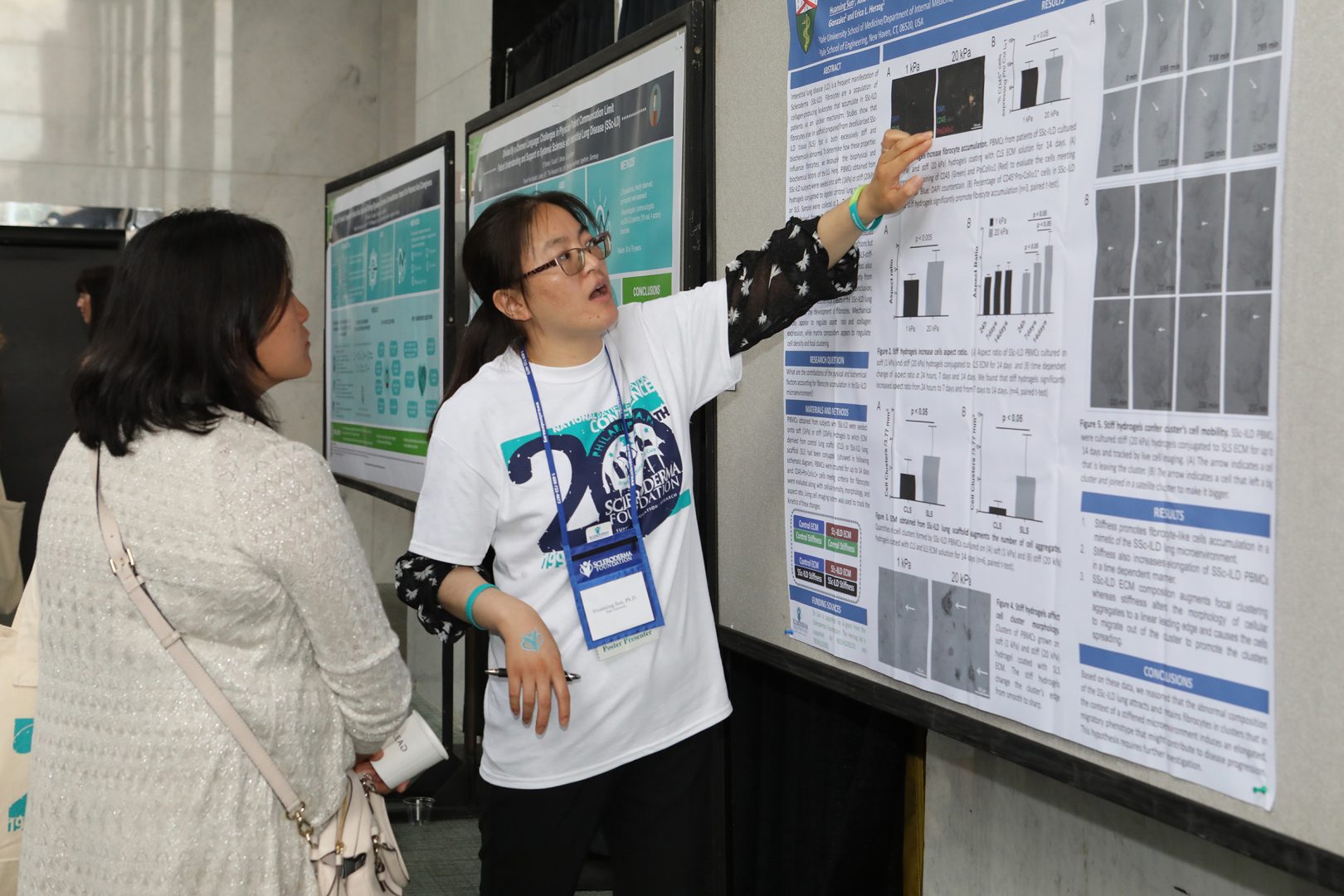The Many Faces of Fibroblasts
Getting Under the Skin of an Autoimmune Disorder
A search for the underlying cause of an autoimmune disease led to surprising findings on long-ignored cells
By Prof. Ido Amit, PhD, Weizmann Institute of Science, and Prof. Chamutal Gur, PhD, Hadassah Medical Center
Supporting actors sometimes steal the show. In a new study published in Cell, “LGR5 expressing skin fibroblasts define a major cellular hub perturbed in scleroderma,” and supported by the National Scleroderma Foundation, researchers headed by Prof. Ido Amit, PhD, at the Weizmann Institute of Science and led by Prof. Chamutal Gur, PhD, a senior physician in the Rheumatology Department at Hadassah Medical Center, have shown that supporting cells called fibroblasts, long viewed as uniform background players, are in fact extremely varied and vital. A subset of these cells, according to the study, may lie at the origins of scleroderma – a rare autoimmune disease. The findings open a new direction for developing a future therapy against this devastating, incurable disorder. The researchers collected skin samples from nearly 100 scleroderma patients and from more than 50 healthy volunteers who served as a control group, in the largest-ever study of this kind to explore scleroderma.
As scleroderma is considered an autoimmune disorder – that is, one in which the immune system turns on the person’s own body – the researchers looked for immune cell differences between the control and patient groups. But contrary to what would be expected of an autoimmune disease, the analysis failed to reveal a characteristic and global pattern of immune abnormalities in most of the patients. Instead, to their surprise, the researchers found it were the patients’ fibroblasts that differed significantly from those of the controls.
Aside from roles in growth and wound healing, fibroblasts were thought to be mere “scaffolds” holding cells in place. The new study challenges this humdrum picture: The researchers found that fibroblasts can be divided into about ten major groups, each performing different and often vital functions, from conveying immune system signals to affecting metabolism, blood clotting, and blood vessel formation. These groups can be further broken into some 200 subtypes.
Most importantly, the researchers managed to identify a subgroup of fibroblasts whose concentration drops sharply in the early stages of scleroderma. They named these cells Scleroderma-Associated Fibroblasts, abbreviated as ScAFs (which is also short for “scaffold”). Whereas in healthy controls ScAFs accounted for nearly 30 percent of all fibroblasts, this percentage decreased dramatically in scleroderma patients and continued to plummet as the disease progressed.
The reduction in the size of a critical subset of fibroblasts appears to be an early event in the course of scleroderma, and it might be possible to design a therapy that will make up for this loss, slowing the progression of the disease.
The researchers mapped out the locations of ScAFs deep within skin tissue, and they tapped these cells’ RNAs to determine what turns a functional ScAF into a malfunctioning cell common in scleroderma patients. They also identified biological markers correlated with specific kinds of organ damage; these markers can help physicians administer a personalized treatment to prevent life-threatening complications. The research also revealed signaling pathways involving ScAFs that can be targeted in future scleroderma therapies.
Integrating the latest single-cell genomic research techniques with clinical data can shed new light on diseases whose origins are currently obscure.
EDITOR’S NOTE:
This study is the largest possible of its kind, an “Established Investigator Grant” awarded by the National Scleroderma Foundation. It advances our understanding of the types of cell subpopulations and their abundance in scleroderma skin, providing novel information on how scleroderma skin differs from normal skin.
Dr. Amit and Dr. Gur presented this research Friday, April 1, 2022, during the “Advances in Scleroderma Research – Global Webinar.” Learn more about the Global Webinar and the Foundation-funded research.
Published April 5, 2022


